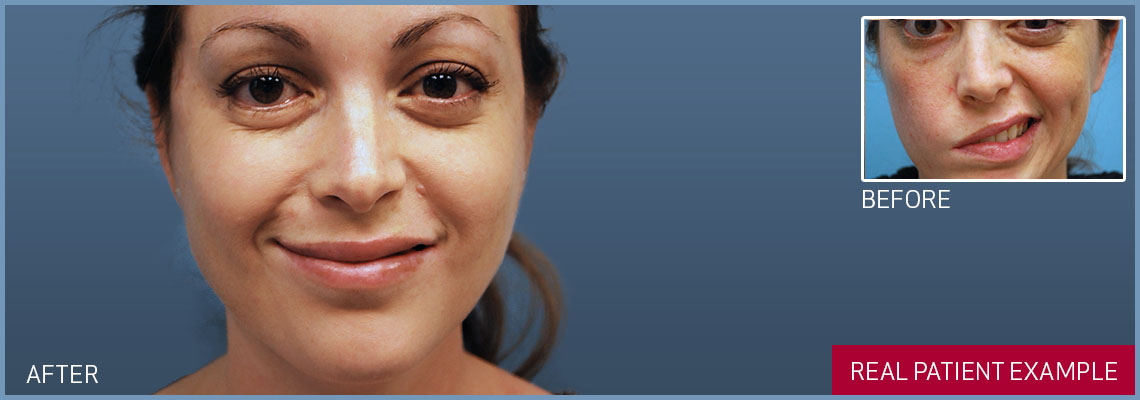Smile Restoration

Paralysis of the mid-face often leads to sagging and asymmetry, producing a loss of oral competence in addition to drooling. Those living with mid-face paralysis can lose facial symmetry and the ability to communicate emotions with a smile. Eating and speech are frequently impaired as well, and the collapse of the external nasal passage can result in obstructed breathing.
Restoration of an active smile and normal resting position of the cheeks and lips is a major goal in facial rehabilitation with functional, cosmetic and social significance.
The goal of restorative “smile” surgery is to reestablish facial balance and harmony both at rest and in motion while simultaneously correcting the associated functional problems. The surgical approach is tailored to the individual and is influenced by the cause and duration of the paralysis along with the condition of the facial nerve and muscles.The patient’s age and medical history also influence the decision-making process.
Smile Restoration Techniques
A large number of procedures are available to restore position, tone and motion to the cheeks and lips. The technique best suited to the individual and their situation is carefully selected after detailed analysis. The surgical procedures can be viewed as performing five general functions:
1. Restoring the continuity of the facial nerve (microsurgical repair & nerve grafts)
2. Transferring nerve fibers from adjacent nerves to reinnervate the facial nerve (nerve transfers)
3. Replacing damaged or atrophied facial muscles (functional free muscle flaps & local muscle transfers)
4. Providing facial support without movement (static suspension)
5. Further enhancing facial appearance and balance (refinement procedures)
Restoring the continuity of a divided facial nerve is the procedure of choice if circumstances permit. A facial nerve that has been sharply transected during trauma or sacrificed during surgery can be repaired utilizing microsurgical techniques. Under the magnification of an operating microscope the cut ends of the nerve can be reunited with stitches finer than a hair (10-0 nylon).
Learn More About Your Options
At Houston Methodist Institute for Reconstructive Surgery, there are a large number of restorative procedures available to assist with rehabilitation of the paralyzed face. It is essential to find an experienced team that can provide all the possible treatment options and help you select the surgery that is right for you. Our dedicated surgeons perform the following procedures and can develop an individualized treatment plan created just for you:
real patient case studies
Learn how facial paralysis surgery and functional restoration can help you.
